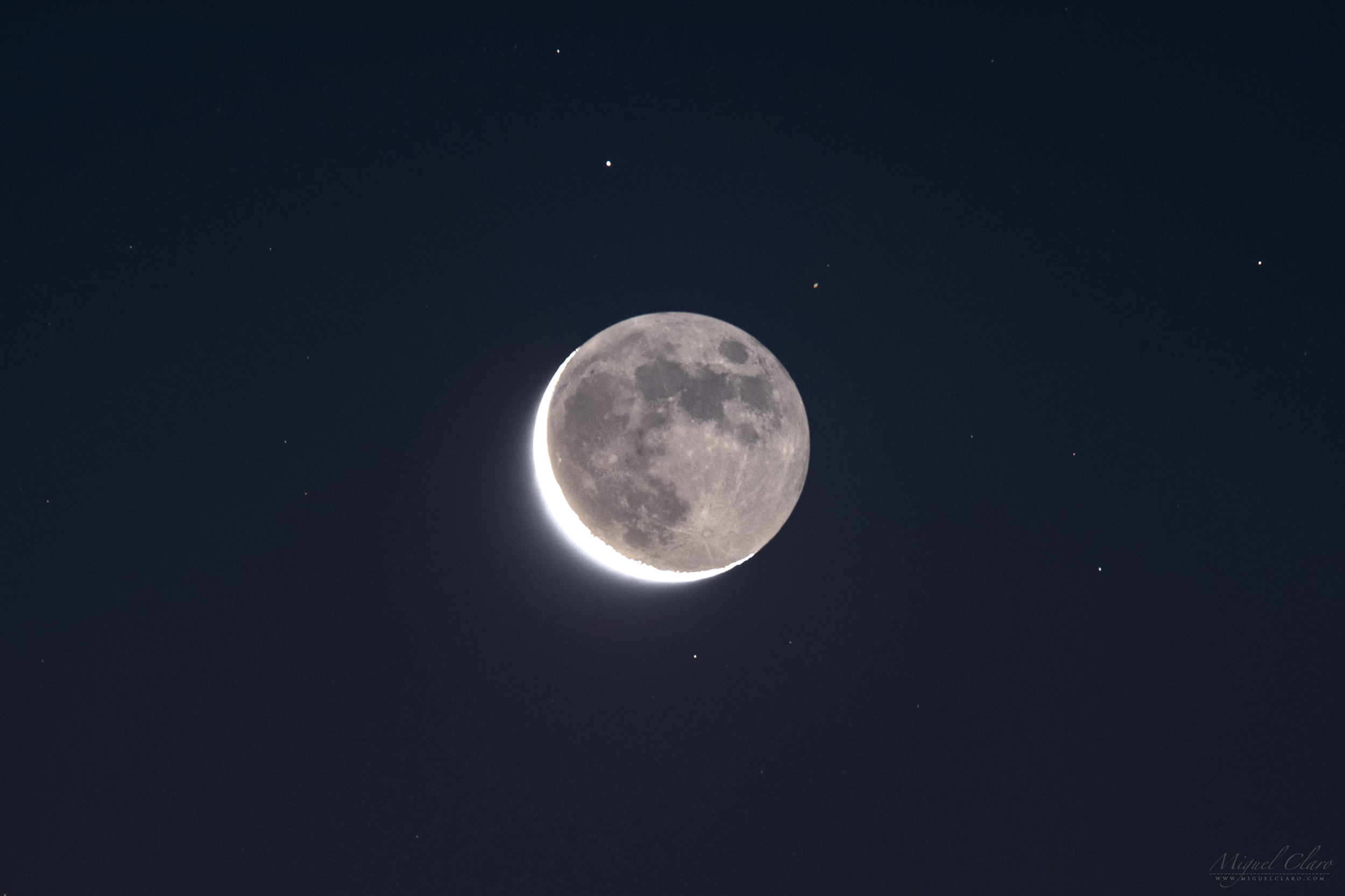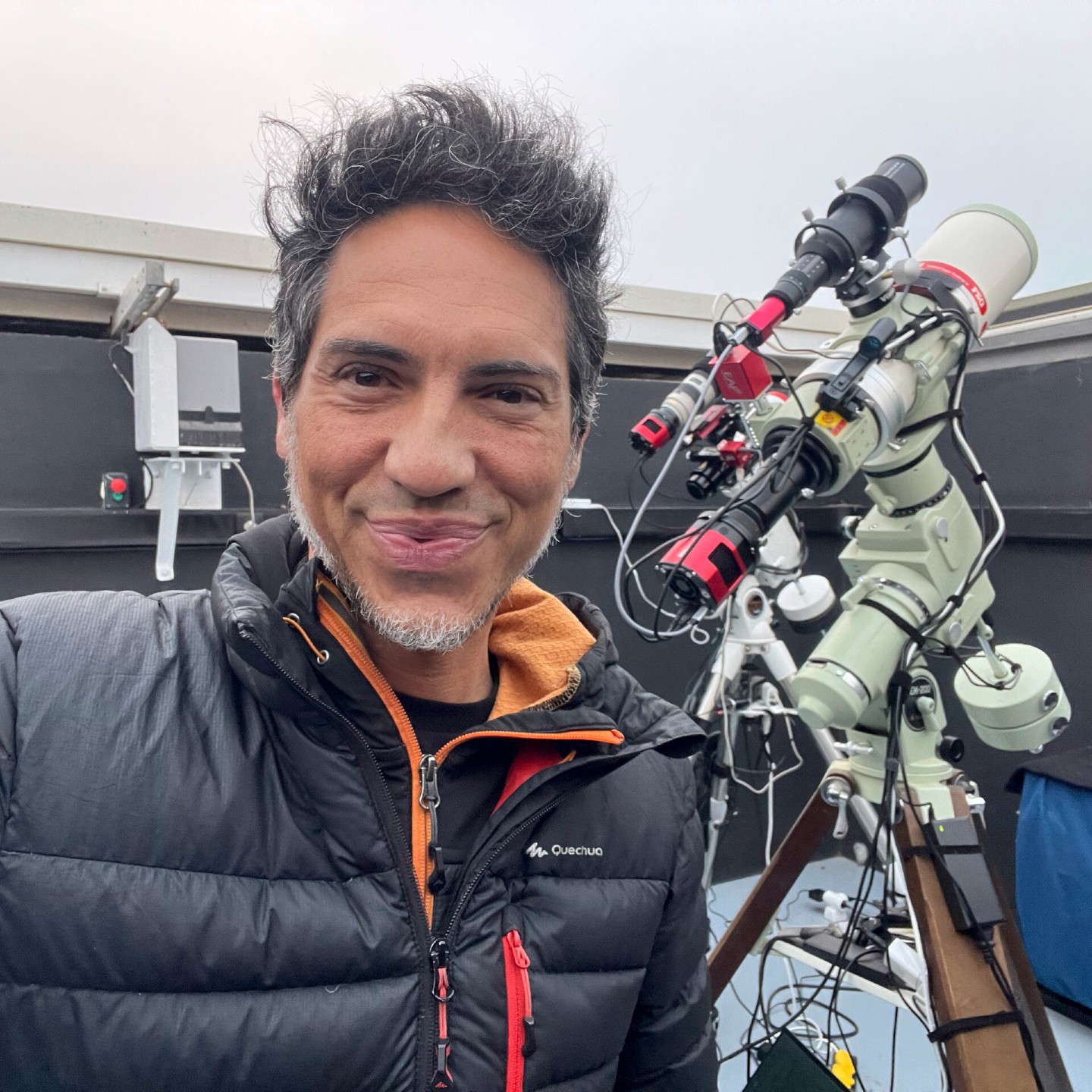'Earthshine' Lights the Way to a Saturn Moon in Stunning Night-Sky Photo
Peekaboo! I see you.

Miguel Claro is a professional photographer, author and science communicator based in Lisbon, Portugal, who creates spectacular images of the night sky. As a European Southern Observatory Photo Ambassador and member of The World At Night and the official astrophotographer of the Dark Sky Alqueva Reserve, he specializes in astronomical "Skyscapes" that connect both Earth and night sky. Join him here as he takes us through his photograph "A Lunar Earthshine Close to Saturn and Iapetus."
Bright Earthshine illuminates the waning crescent moon as Saturn peeks over its upper limb in this night-sky photo taken shortly after the moon occulted the planet on Feb. 2.
During a lunar occultation, the moon passes in front of a planet, star or other celestial object, temporarily blocking it from view. When the moon occulted Saturn on Feb. 2, I photographed the event from the hotel Nave Terra in Alandroal, Portugal, which is part of the Dark Sky Alqueva Reserve.
Saturn is visible near the upper right edge of the moon and looks like a white-yellow oblong dot. If you look closely, you can see what is likely Saturn's large moon Titan, which looks like a tiny, faint star right next to Saturn.
A close-up view captured with a telephoto lens shows a more detailed version of this scene. Along with a better view of Saturn's moon, this image features more faint stars surrounding the moon's disk — something that is not possible to witness when the moon is nearly full due to the increased light.
Editor's note: If you have an amazing night sky photo you'd like to share with us and our news partners for a possible story or image gallery, please contact managing editor Tariq Malik at spacephotos@space.com.
This article was corrected to reflect that the moon of Saturn visible in the photo is likely Titan, not Iapetus.
Breaking space news, the latest updates on rocket launches, skywatching events and more!
- Watch the Moon Play 'Peekaboo' with Bright Star Aldebaran (Photos, Video)
- Pink Clouds Adorn Crescent Moon in Gorgeous Photo
- Milky Way Twinkles in Twilight in Spectacular Island View
To see more of Claro's amazing astrophotography, visit his website: www.miguelclaro.com. Follow us on Twitter @Spacedotcom and on Facebook.
Miguel Claro is a professional photographer, author and science communicator based in Lisbon, Portugal, who creates spectacular images of the night sky. As a European Southern Observatory photo ambassador, a member of The World At Night and the official astrophotographer of the Dark Sky Alqueva Reserve, he specializes in astronomical skyscapes that connect Earth and the night sky.


